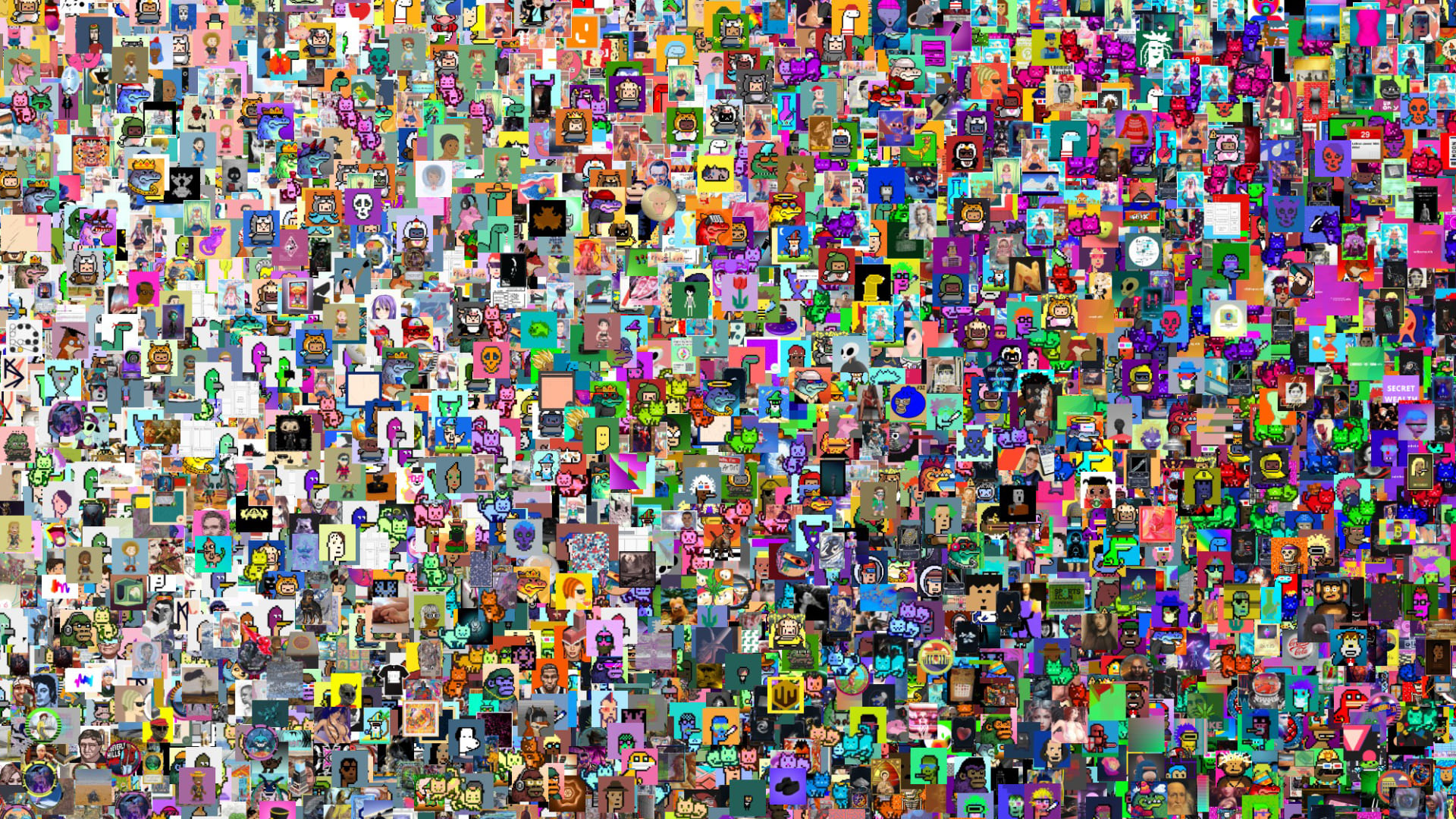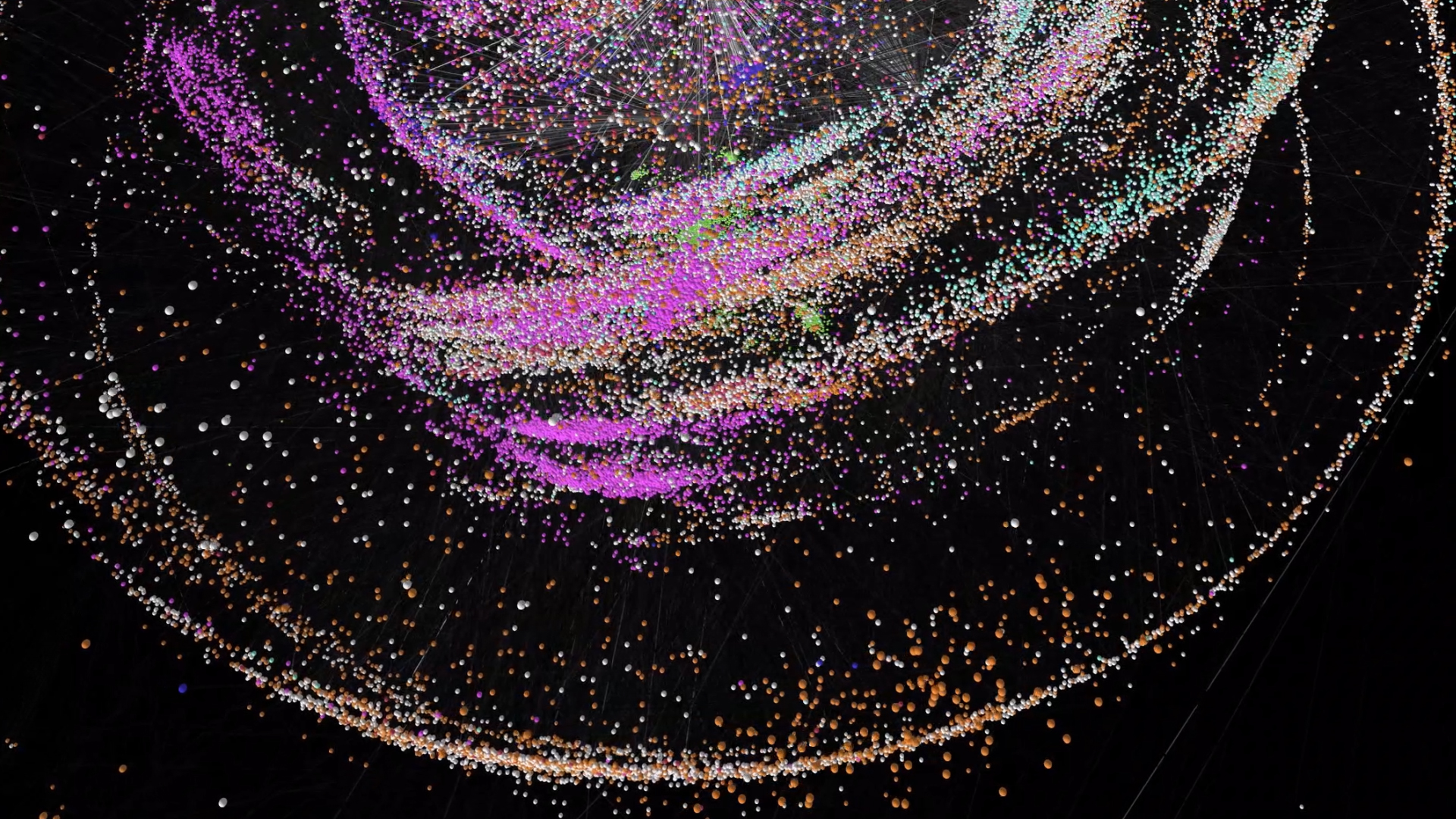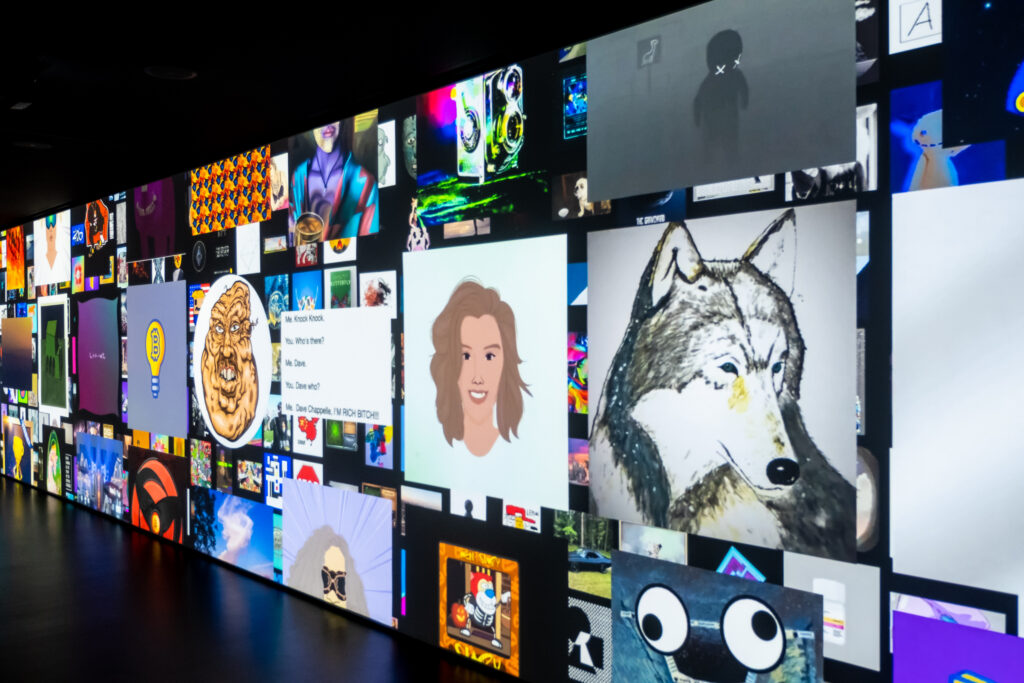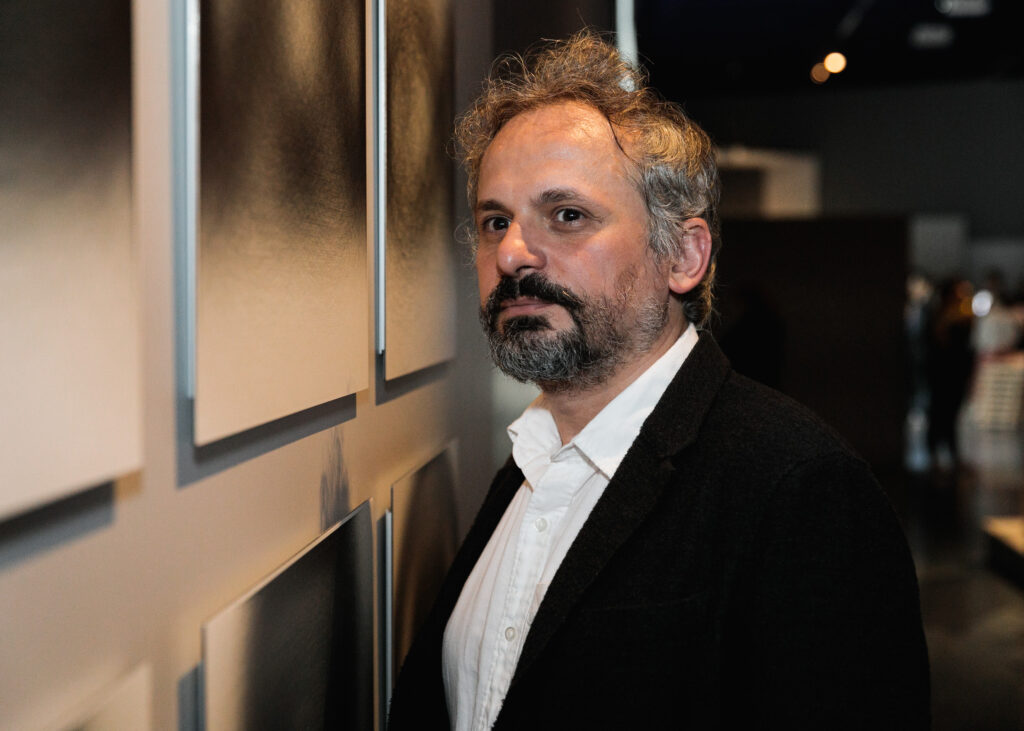Post
Understanding the Invisible | Mauro Martino
Between scientific rigour and artistic creativity, Mauro Martino uses data collected over more than three years of research to stage the evolution of the NFT aesthetic and market in an immersive and exploratory site-specific installation.

Artist and scientist, expert in artificial intelligence and data visualisation, Mauro Martino uses deep-learning analysis tools to investigate the entire production of NFTs. Using data collected over more than three years of research, leading to several scientific publications, he stages five years of the evolution of the NFT aesthetic and market. With as many as 10 million NFTs, tens of millions of trades in the market analysed, hundreds of blockchains examined, Mapping the NFT Revolution is the most extensive exploration of this world to date.
An exciting data film, between quantitative and qualitative dimensions
“We invited Mauro Martino who has been collecting data and analysing and processing them since the first NFTs were born. Two years ago he published the first report on NFTs (on how museums, galleries use them, the implications they have on relationships, on the cultural and economic world) and is about to prepare a second one of international standing. New layouts and data visualisation techniques have been created especially for this installation,” explains Maria Grazia Mattei, Founder and President of MEET. “The author engages in an immersive experience that reveals both the quantitative and analytical aspect of the collected data, as well as their qualitative and poetic dimension. The end result is an exciting data-film, made only with data and artificial intelligence models. The world of NFT is anything but in crisis, an interconnected and nuanced world: for the first time we will realise the true extent of this phenomenon by entering Martino’s immersive work”.

Mauro Martino’s mapping of this new NFT world is revealed through the visualisation of the relationships and connections of millions of NFT images that are recombined to form a whole thanks to the processing power of artificial intelligence algorithms: an operation that was previously impossible due to the need to coherently interpret such a large mass of information. The algorithm allows a different, deeper, and paradoxically more nuanced, variable view of reality. And this is possible because AIs work very well on predictive aspects, on randomness, calculating all the possible combinations that reality can take on, giving us a coherent overall picture: a colossal machine of sliding doors that open or close on countless variants of reality.

With Mapping the NFT Revolution, Mauro Martino introduces us to a grand vision, somewhere between scientific rigour and artistic creativity. The digital landscape, unlike the natural one, is itself a mathematical representation, an abstraction, and creates a new reality that we can define as virtual. The end result is a data-film, a new, exciting aesthetic form, a hybrid result of data and artificial intelligence models, a territory into which we are entering for the first time, the true New World of our Millennium.
In collaboration with Andrea Baronchelli (scientist), Luca Stornaiuolo (generative A.I. expert) and Philip Abussi (composer).
Mauro Martino

Mauro Martino is a Principal Research Scientist at the MIT-IBM Watson AI Lab (Cambridge, MA, USA), where he founded and directs the Visual Artificial Intelligence Lab. He was formerly an Assistant Research Professor at Northeastern University working with Albert-Laszlo Barabasi at the Center for Complex Network Research and with David Lazer at the Institute for Quantitative Social Science (IQSS) at Harvard University.
He obtained his PhD with a thesis in Urban Interaction Design within Carlo Ratti’s Senseable City Lab (Massachusetts Institute of Technology), and Polytechnic University of Milan.
Mauro holds several patents and has co-authored over 40 scientific publications. He has created data visualization for the BBC, Scientific American, The New York Times, The Washington Post, Süddeutsche Zeitung, Der Spiegel, Le Figaro, Corriere della Sera, National Geographic, Popular Science, Wired. His work has been exhibited worldwide at venues such as the Venice Biennale, the Serpentine Gallery in London, the Ludwig Museum in Budapest, GAFTA in San Francisco, Lincoln Center in New York, the ZKM | Center for Art and Media in Karlsruhe (Germany), and his work is part of the permanent collection of the Ars Electronica Center in Linz.
Mauro has been a presenter at TEDx Cambridge (2012) and TEDx Latvia (2016), his works have been featured in scientific journals such as Nature, Science, PNAS, and textbooks about AI Art and Data Visualization: «Possible Futures: Art scenarios and artificial intelligence» by Rebecca Pedrazzi, «Data Visualization» by Andy Kirk, «The Truthful Art» by Alberto Cairo, «The Best American Infographics» 2015 and 2016 editions.
Mauro is an award-winning designer whose projects received the Gold Medal at the 2017 Vizzies Visualization Challenge by National Science Foundation, he has won several times the Webby Award, the Innovation by Design Award (by Fast Company), the Information is Beautiful Award.
His art project AIPortraits (2018/2019) was the first generative GAN-based application to go viral worldwide, with over 8 million unique users per day. In 2018 he presented at NeurIPS the first collection of sculptures generated with a 3D GAN model he invented.
Mauro Martino is Professor of Practice at Northeastern University, where he has been teaching the Artificial Intelligence for Creativity and Design course for several years. Each year he gives workshops and lectures on AI and Creativity at various universities, including MIT and Harvard University.
